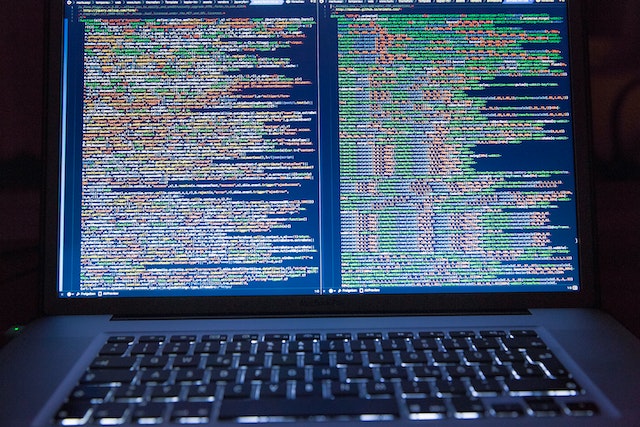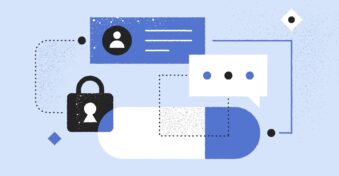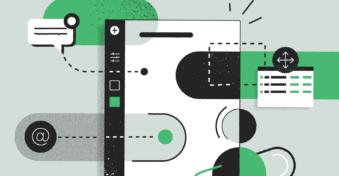In this digital age, protecting your company’s data is more critical than ever. As technology evolves and new threats emerge, businesses need to stay ahead of the curve regarding safeguarding their information. This means implementing a robust security strategy covering all data protection aspects, from physical security measures to network access control and beyond.
Protecting your company’s data is essential for safeguarding sensitive information from malicious actors and maintaining customer trust. Companies must take the necessary steps to protect their data and ensure that their customers feel secure.
Data protection and cybersecurity are critical elements of any effective security strategy. Companies should develop an information security policy that outlines the necessary measures to protect critical data from unauthorized access, misuse, or destruction. Additionally, companies should ensure that all employees understand their responsibilities concerning data security and abide by the policies set out.
Unfortunately, data breaches are becoming increasingly common and can have devastating consequences. When companies don’t take the necessary steps to protect their data, they leave themselves open to attacks from malicious actors who may be able to access confidential information or disrupt operations. Not only does this put customer trust at risk, but it also results in significant financial losses.
The consequences of a data breach can be far-reaching, both for a company’s reputation and bottom line. A data breach can also result in regulatory fines or penalties if the company is found to violate applicable laws or regulations.
Hackers can use various methods to gain access to sensitive corporate data. These include phishing emails, malicious code, brute force attacks, and social engineering techniques. Hackers typically hack corporate data to steal information, like credit card numbers or personal data. They may also use the stolen information to launch further attacks against the company or its customers.
There’s not a one-size-fits-all solution when it comes to protecting company data. Each company has unique needs and requirements for protecting its data and must evaluate its own situation to develop a plan to protect itself and its customers.
Here are nine tips to protect company data in 2023.
9 Tips to Protect Company Data
1. Implement data encryption
Encryption is scrambling information so only authorized users can access it. Encryption is essential to data security and provides excellent protection against cyber-attacks. It ensures that if any data is lost through cyber-attacks, it cannot be read by unauthorized individuals. Companies should look into implementing robust data encryption protocols to protect their confidential information from malicious actors.

Data encryption can protect any information, from customer and financial records to intellectual property and confidential documents. It works by scrambling the data into ciphertext, which is unreadable to anyone without access to the encryption key. This makes it impossible for hackers to access the information even if they breach a company’s system.
To implement data encryption, companies must first identify which data needs to be encrypted, then decide on the encryption protocol that best suits their needs. The encryption key should be securely stored and only shared with trusted personnel. Companies should also regularly monitor their systems for any signs of unauthorized access or attempts at decrypting the data.
2. Use access control
Access control is a security measure restricting access to some administrative regions or resources. Access control is essential to data security and helps protect confidential information from unauthorized access. It ensures that only authorized personnel can see the data and reduces the risk of it being stolen by malicious actors. It also lowers the chances of a malicious actor using stolen data for their gains, such as identity theft or financial fraud.

Access control can protect all types of data, including customer data, financial records, and confidential documents. It limits who can access certain areas or resources within an organization. It uses authentication and authorization protocols to ensure that only qualified personnel can access the data.
To implement access control, companies must first identify who should have access to which areas or resources. They then must create authentication protocols and establish authorization rules restricting access to the right people. Companies should also regularly monitor their systems for any signs of unauthorized access attempts. It’s also essential to ensure that all employees understand the company’s data security and access control policies.
3. Strengthen employee training & awareness programs
Employee training and awareness programs are essential for data security. By teaching employees about the latest cyber threats and how to respond to them, companies can reduce the chances of their information being stolen or compromised.
Employee training and awareness programs can be used to protect all types of data, including customer data, financial records, and confidential documents. They teach employees how to deal with confidential data, what precautions should be taken while sharing data, what is the best way to send secure documents, how to respond to the latest cyber threats, and much more. Companies can ensure they are prepared for a breach or attack by teaching employees what to look out for.

To implement a training and awareness program, companies should first identify which employees need to be trained. They should then create a program that covers the latest cyber threats and how to respond to them in the event of an incident. The training should be regularly updated to ensure that all employees know about new threats or vulnerabilities.
4. Utilize firewalls & anti-virus software
Firewalls and anti-virus software are essential for data security since they protect an organization’s data and systems from malicious actors. Firewalls are a barrier between networks, while anti-virus software detects and blocks malicious files.
Firewalls and anti-virus software can protect all types of data, including customer data, financial records, and confidential documents. They work by blocking any suspicious activity or malicious files attempting to access the network. They act as a barrier between networks, preventing unauthorized people from accessing sensitive data. Anti-virus software also helps to detect and block any malicious files that may be trying to run on a system.
Companies should first identify which systems require protection to implement a firewall and anti-virus software. They should then purchase and install the necessary hardware and software to ensure their networks are secure. The firewalls and anti-virus software must also be regularly updated to stay ahead of any new threats.
5. Keep your systems regularly updated
Companies can reduce the chances of their information being stolen or compromised by ensuring that all software and hardware are up-to-date with the latest security patches. Updating systems is essential for data security since outdated software or hardware may have known vulnerabilities that malicious actors can use to gain access to sensitive information.
Updating systems can protect all types of data, including customer data, financial records, and confidential documents. It ensures that known vulnerabilities are covered to reduce the chances of a malicious actor successfully exploiting them. By remaining up-to-date with the latest security patches, companies can ensure that their networks remain secure even in a breach.
To keep their systems updated, companies should regularly check for updates to software and hardware. If available, they should install any security patches or release updates. Additionally, they should ensure that all anti-virus and firewall programs are up-to-date with the latest definitions.
6. Monitor network activity consistently
By monitoring network activity, companies can detect suspicious behavior and take appropriate action to protect their data. Monitoring network activity is vital for data security since it enables organizations to detect potential threats before they can cause any damage.
By monitoring network activity, companies can protect all types of data, including customer data, financial records, and confidential documents. It works by detecting any suspicious behavior or attempts to access the network. By reviewing logs and implementing monitoring software, companies can see any malicious actors trying to gain access to their systems.
To monitor network activity, companies should first install software that detects suspicious behavior or attempts to gain access. They should also regularly review the network logs for unusual activities and take action if necessary. Additionally, they should consider implementing an intrusion detection system, which can be used to detect and respond to potential threats automatically.
7. Secure connections through VPNs
By using a virtual private network (VPN), companies can ensure secure communication and protect their data from unauthorized access.
By using a VPN to secure connections, companies can protect all types of data, including customer data, financial records, and confidential documents. It encrypts the traffic between the user and the server, making it difficult for others to intercept and access sensitive information. A VPN can also provide anonymity by hiding the user’s IP address.

To secure connections with a VPN, companies should first select and configure a VPN service that meets their needs. They should then install the client software on all devices connecting to the network. Once installed, users can securely connect to the company’s server using the encrypted connection provided by the VPN.
8. Secure remote access
Secure remote access enables employees to securely access the company’s network and resources while away from the office. This is accomplished through secure protocols and encryption, ensuring that only verified users can access the network and its resources.

This ensures that sensitive information continues to stay protected. By enabling secure remote access, companies can protect all types of data, including customer data, financial records, and confidential documents.
Companies should first identify and define the locations that need access to their network to enable secure remote access. They should then configure their security settings to allow only authorized users from those locations to gain access. Additionally, they should consider implementing two-factor authentication for added security.
9. Invest in security solutions
Utilizing security solutions is essential for data security because it provides companies with the tools and resources to protect their networks and data from potential attackers. Investing in security solutions is a proactive approach that involves investing in software and hardware solutions that can help protect against potential threats. By implementing these solutions, companies can quickly detect and respond to threats.
Investing in security solutions can help protect all types of data, including customer information, financial records, and confidential documents. It provides companies with the necessary tools and resources to protect their networks and data from potential attackers.
To effectively invest in security solutions, companies should first identify their security needs and develop a plan to address them. This may include investing in anti-virus software, firewalls, intrusion detection systems, and other security tools. Additionally, companies should ensure that their devices are constantly updated with the latest security patches and bug fixes.
Types of Company Data Security Risks
Data security risks come in all shapes and forms. However, the most common ones are:
- Phishing attacks. Phishing attacks occur when cybercriminals attempt to access sensitive information by posing as a trusted entity. They may use email or text messages to trick victims into revealing confidential information such as passwords, credit card details, and bank account numbers.
- Malware and viruses. Malware and viruses are malicious software programs designed to gain access to a user’s system without their knowledge or consent. They can steal confidential information, spy on activities, and even damage systems.
- Unsecured mobile devices. Unsecured mobile devices can be hacked and used to access sensitive data. Hackers may install malicious software on the device to spy on users or steal confidential information.
- Insider threats. Insider threats refer to employees or other personnel with access to an organization’s data who misuse their privileges. They may steal confidential data, leak it, or even sabotage systems.
- Software vulnerabilities. Software vulnerabilities refer to weaknesses in a system that attackers can exploit. Attackers may use these vulnerabilities to access the system and its data.
- Denial of service attacks. Denial of Service (DoS) attacks overwhelm a system’s resources, preventing it from functioning correctly. This type of attack can be used to damage systems or steal confidential data.
- Social engineering attacks. Social engineering attacks are used to manipulate people into revealing confidential information. Attackers may use this information to access a system or its data.
- Data breaches. Data breaches occur when unauthorized users gain access to a system or its data. They can steal confidential information, spy on activities, and even damage systems.
- Lack of encryption. Encryption is essential for data security because it ensures that confidential information remains secure. Without encryption, unauthorized users can easily steal or view sensitive data.
- Cyber-espionage. Cyber espionage involves malware, social engineering attacks, and other techniques to spy on organizations. Attackers may use this information to gain a competitive advantage or steal confidential data.
Final Thoughts
Data security is essential to any business and should not be taken lightly. Implementing the right solutions, such as encryption, secure remote access, and investing in security solutions, will help minimize the risk of a successful attack and protect sensitive data from falling into the wrong hands. By following the steps outlined above, companies can ensure that their data remains secure and protected from potential attackers.
A good starting point is to secure your file sharing, and there’s no company more reliable to request that service from than SecureDocSharing. You can now finally stop worrying about finding ways to transfer company data. SecureDocSharing provides advanced security and compliance, enabling companies to securely share sensitive documents without worrying about data breaches or intrusions. It’s the perfect solution for companies that must protect their data and scale up their security.
Secure your files with SecureDocSharing today!
FAQ
-
Companies can improve data privacy by implementing strong security measures such as encryption, secure remote access, and investing in security solutions. They should also ensure that their devices are constantly updated with the latest security patches and bug fixes.
-
First, companies should identify their security needs and develop a plan to address them. This may include investing in anti-virus software, firewalls, intrusion detection systems, and other security tools. Additionally, companies should ensure that their devices are constantly updated with the latest security patches and bug fixes. Finally, they should consider implementing two-factor authentication for added security.
-
First, companies should ensure that their employees are trained on proper data security practices. They should also implement access control measures such as two-factor authentication to restrict access to sensitive information. Additionally, companies should invest in security solutions such as anti-virus software and firewalls for added protection. Finally, they should monitor their network for potential threats or breaches.


